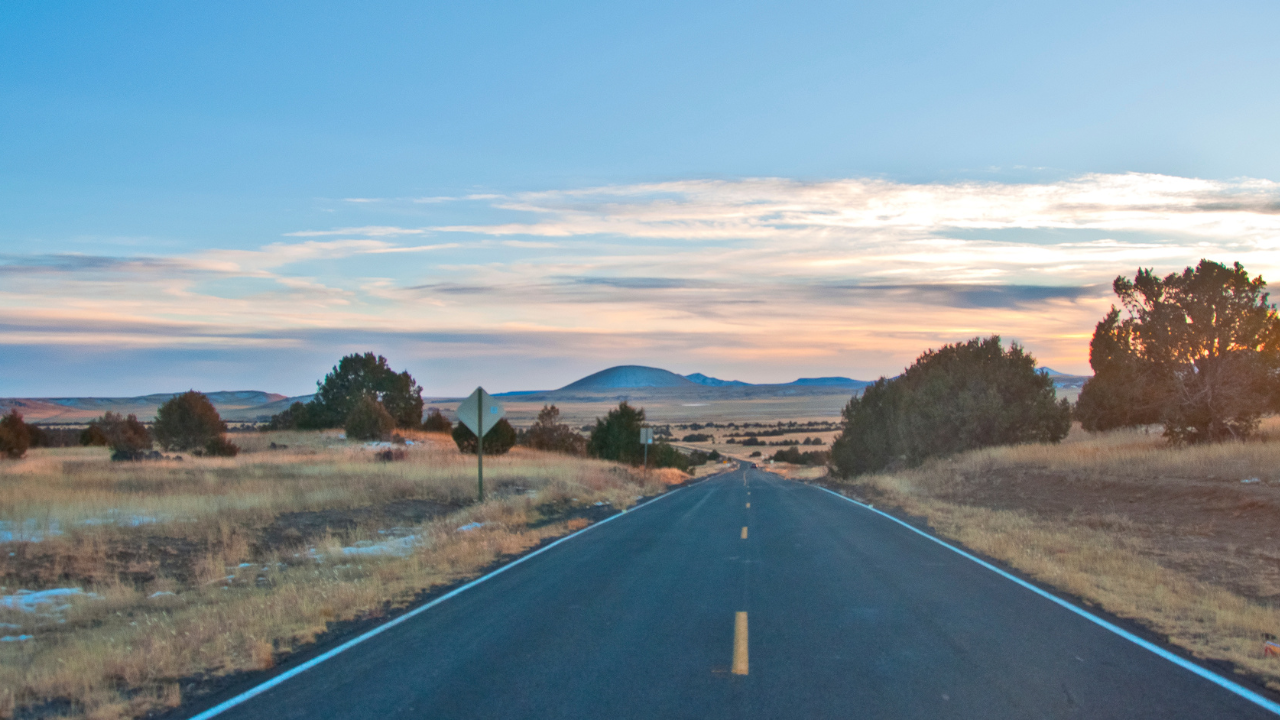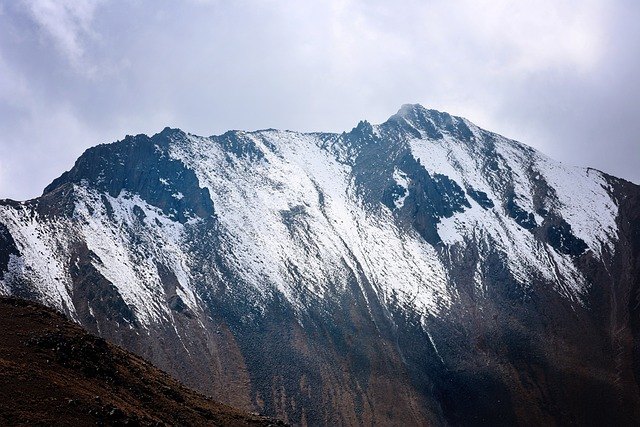Has it ever snowed in Mexico, a country known for its warm climate and beautiful beaches? The idea of a beautiful snow covered cone might sound unusual, but believe it or not, snowfall does occur in certain parts of Mexico. This article delves into the fascinating phenomenon of snow in a country typically associated with sunshine and warmth.
While it’s true that the majority of Mexico enjoys warm temperatures throughout the year, there are some high-altitude areas as well as northern states that experience snowfall. In fact, Mexico has seen snow in 12 out of its 32 states, making it a more common occurrence than you might initially think. Let’s explore the various locations where it has snowed in Mexico and uncover the captivating story behind each snowy surprise.
Mexico’s Climate Overview – From Large Mountain Ranges to Tropical Beaches

Mexico is known for its warm and tropical climate, but the weather can vary significantly due to the country’s vast size and diverse geography. The northern parts of Mexico experience cooler temperatures during the winter season than the warmer southern and coastal regions, like Cancun.
In some regions, especially those with large mountain ranges and high elevation mountain peaks, it’s not uncommon for snow to fall. While snow is generally rare throughout most of the country, it does occur in select areas. Some of the most popular snowy destinations include the northern states, central Mexico, and the Sierra Madre Occidental mountains.
Although Mexico City, the country’s capital city, has only experienced snow twice on record, the mountains surrounding the city can receive snowfall. This results in a unique contrast between the city’s downtown bustling streets and the snowy peaks in the distance.
Overall, Mexico’s climate is diverse, with varying weather patterns and temperatures throughout the country. From the hot weather and sandy beaches of the Yucatan Peninsula to the snowy mountain peaks in the Sierra Madre mountain ranges, Mexico offers a little bit of everything for travelers and locals alike.
Historical Snowfall Events in Mexico

Although snowfall is generally rare in Mexico due to its tropical climate, there have been a few memorable natural snow- events that have occurred throughout the country’s history. Here are some noteworthy historical snowfall events in Mexico:
1967 Northern Mexico Snowfall
In 1967, a significant snowfall event occurred in Northern Mexico, which covered cities like Monterrey and Saltillo in a thick layer of snow. This rare event is still remembered by many residents and reminds us that even regions closer to the equator can experience snowfall under the right conditions.
1997 Central Mexico Snowfall
In December 1997, snow fell in Guadalajara, Mexico, at an elevation roughly 2,800 feet lower than Mexico City. This was a rare event, and residents of Guadalajara still recall the unusual sight of snow on the streets of their city. This event can be attributed to a combination of unusual weather patterns and colder-than-normal temperatures during that time source.
2016 Toluca Snowfall
In 2016, the city of Toluca, located in central Mexico, experienced a significant snowfall event. The snow, which accumulated up to 9 inches in some areas, coated surrounding mountain peaks and provided a stunning and unusual winter landscape for residents to enjoy. This snowfall was attributed to a combination of high elevation and lower than usual winter temperatures, during that time.
2021 Monterrey Snowfall
On February 15, 2021, Monterrey, a city in northeastern Mexico, witnessed an extraordinary snowfall event that covered the city in a blanket of white. This event, dubbed as a “historic” snowfall by the locals, led to heavy snow accumulation in the city, causing disruptions in the city’s day-to-day activities. The snowfall was a result of a polar vortex that brought frigid air and cold temperatures to the region which typically experiences warm temperatures year-round.
While these historical snowfall events have been rare occurrences within Mexico, they serve as a reminder that weather can be unpredictable, and even regions with warmer climates can experience snowfall from time to time.
Factors Contributing to Snow in Mexico
While the majority of regions in Mexico experience tropical weather, there are several factors that contribute to the presence of snow in certain areas of the country. To better grasp the reasons behind snowfall in Mexico, it is essential to look into the aspects of elevation, global weather patterns, and climate change.
Elevation
One of the most significant factors in determining if an area will receive snow is its elevation. Mexico has large mountain ranges with heights reaching 10,000 feet above sea level. In 12 out of the 32 states, snow is a common occurrence each winter season, especially in northern Mexico and highlands areas. Such high altitudes provide the perfect conditions for snow to form, as temperatures drop with an increasing elevation, often reaching below freezing points.
Some popular snow-covered mountain biking locations include the Nevado de Toluca, which is the fourth highest mountain peak in Mexico, and the Sierra Madre Occidental and Sierra Madre Oriental mountain ranges.
Global Weather Patterns
Weather patterns play a crucial role in the occurrence of snow in Mexico. Northern regions of the country are more prone to snow due to their proximity to cold fronts arising from the Arctic. These cold fronts often sweep through northern Mexico, bringing colder temperatures and moisture, resulting in snowfall in several states.
Furthermore, ocean currents influence Mexico’s weather. Cooler currents from the Pacific Ocean can affect certain mountainous areas, leading to colder climates and occasional snowfall.
Climate Change
Climate change has had a significant impact on weather patterns globally, and Mexico is no exception. Alterations in temperature patterns, ocean currents, and atmospheric conditions can lead to unexpected snowfall in areas where it was once a rare occurrence. As the Earth’s climate continues to change, it is possible that more regions in Mexico might experience snow in the future.
In conclusion, elevation, global weather patterns, and climate change all play a role in contributing to the presence of snow in Mexico. While most of the country is known for its warm and tropical climate, these factors can lead to the occurrence of snow in higher altitude areas and northern states, providing a unique snow-touched landscape in a predominantly warm country.
Snow in Mexico’s Mountain Regions
Although snow is not common in most parts of Mexico, it does fall in some mountainous regions. The high elevation of these mountains creates the perfect conditions for snowfall during the winter season. In this section, we’ll explore three famous snow-covered peaks in Mexico: Nevado de Toluca, Pico de Orizaba, and Iztaccihuatl.
Nevado de Toluca
Nevado de Toluca, also known as Xinantecatl, is a dormant volcano located in the State of Mexico, around 80 kilometers west of Mexico City. Its summit reaches 4,680 meters (15,354 feet) above sea level, making it the fourth highest mountain in the country. Snow can be found on its higher elevations during the winter months, attracting tourists for skiing, snowboarding, and other winter sports activities. There are two beautiful lagoons within the crater of the volcano, Laguna del Sol and Laguna de la Luna, which add to its stunning natural beauty.
Pico de Orizaba
Pico de Orizaba, also called Citlaltépetl, is North America’s highest volcanic peak, rising 5,636 meters (18,491 feet) above sea level. It is located on the border between the states of Puebla and Veracruz in eastern Mexico. Being the third highest mountain in the Northern Hemisphere, it is permanently covered with snow and glaciers, making it a popular destination for mountaineers and extreme adventure lovers. The volcano is also part of the Pico de Orizaba National Park, which offers amazing views and opportunities for hiking and mountain climbing.
Iztaccihuatl
Iztaccihuatl, or the “White Woman,” is Mexico’s third highest mountain and is located in central Mexico, near the border of Puebla and the State of Mexico. The mountain gets its name from its snow-capped peaks resembling a sleeping woman while lying down. At an elevation of 5,230 meters (17,159 feet) above sea level, Iztaccihuatl is often covered in snow during the winter season. Apart from mountaineering and trekking activities, the Iztaccihuatl-Popocatepetl National Park also offers visitors the opportunity to explore its diverse flora and fauna, making it a great destination for nature lovers.
In conclusion, although snow in Mexico is more of a rarity, it does occur in the country’s large mountain ranges, such as Nevado de Toluca, Pico de Orizaba, and Iztaccihuatl. These snow-covered peaks offer stunning landscapes and a range of outdoor activities, providing a unique experience for those who wish to see a different side of Mexico during the winter season.
Impacts of Snow in Mexico
While snow is not a common occurrence in most parts of Mexico, certain areas experience heavy snowfall, particularly during the winter season. This can lead to various impacts on the country, ranging from effects on agriculture to challenges in infrastructure and opportunities for recreational activities.
Effects on Agriculture
In the northern states and high-elevation mountain ranges of Mexico such as the Sierra Madre Occidental and Sierra Madre Oriental, snow can pose a challenge to agricultural activities during the winter months. Crops, particularly those at higher elevations, may be affected by frost and freezing point temperatures, causing damage and reducing yields. Livestock may also face difficulties in these conditions, with farmers needing to invest in additional winter gear and protection for their animals.
Infrastructure Challenges
In regions where snow is rare, like Mexico City, the infrastructure may not be fully prepared for such weather phenomena. The limited experience of snow in these areas can lead to issues such as road closures, disruptions in public transport, and potential damage to buildings and structures not designed to withstand the weight of snow.
Additionally, the rarity of snowfall in Mexico means that there is a lack of resources and equipment, such as snowplows and adequate road maintenance, which can cause further disruptions and inconvenience to the general population.
Recreational Activities
Despite the challenges, snow in Mexico also provides opportunities for recreational activities, particularly in higher elevation mountain peaks and winter sports locations. Ski resorts, such as the ones in Nevado de Toluca and Monterreal, become popular destinations for extreme adventure lovers and tourists looking to experience skiing, snowboarding, and other winter sports.
In addition to traditional winter sports, visitors can also explore the beauty of snow-capped mountains, frozen waterfalls, and picturesque towns, like Real de Catorce, which become even more stunning with a layer of snow. This enhances the appeal of these areas for tourists who seek a different side of Mexico’s climate and stunning natural wonders, providing a boost to the local tourism industry.
Overall, the impacts of snow in Mexico are varied and region-specific. While it does present challenges to agriculture and infrastructure in certain areas, it also provides a unique opportunity for visitors to experience the country’s varied climate and stunning natural landscapes shaped by snow.
Mexico City Climate Overview: Heat, Rainfall, and Pollution
Mexico City is a vibrant metropolis with over 21 million inhabitants. Its climate reflects its culture, with hot summers, cold winters and an unpredictable rainy season. Unfortunately, due to the city’s geography and pollution levels, its climate can be both unique and challenging.
Map of Mexico City – Features
Mexico City lies in the Valley of Mexico, a high-altitude basin surrounded by mountains. This geographical feature creates an unusual climate that’s cooler and drier than other cities at this latitude. At 2,240 meters (7,350 feet) above sea level, air here is thinner and contains less oxygen than at lower elevations.
Experience Mexico City through Its Seasons
Mexico City experiences two main seasons: the dry season from November to April and then rainy season from May to October. During this time, temperatures in Mexico City range from 20oC to 25oC (68degF to 77degF). At night temperatures drop around 10degC (50degF). Overall, visitors enjoy pleasant weather during this period with average temperature and little rainfall. The dry season is the ideal time of year to visit Mexico City as weather is pleasant and rainfall is minimal.
Rainy season in Mexico City brings with it heavy rainfall, thunderstorms, and lightning. Temperatures drop to between 16degC to 22degC (61degF to 72degF), leading to flooding and landslides as infrastructure struggles to cope with the deluge. As such, visiting Mexico City during rainy season should be avoided due to unpredictable weather patterns and potentially hazardous streets.
Pollution in Mexico City
Mexico City’s notorious pollution levels can have a major effect on its climate. The city’s geography and weather patterns trap pollutants in the air, creating a smog that poses risks to people’s health. Pollution levels are highest during dry seasons when little rainfall takes away these particles.
Mexico City’s primary sources of pollution come from vehicles, industry and the burning of waste. To combat this problem, the government has implemented measures such as restricting vehicle usage, encouraging public transportation and enforcing environmental regulations. While these efforts have had some success, pollution levels in the city remain high.

